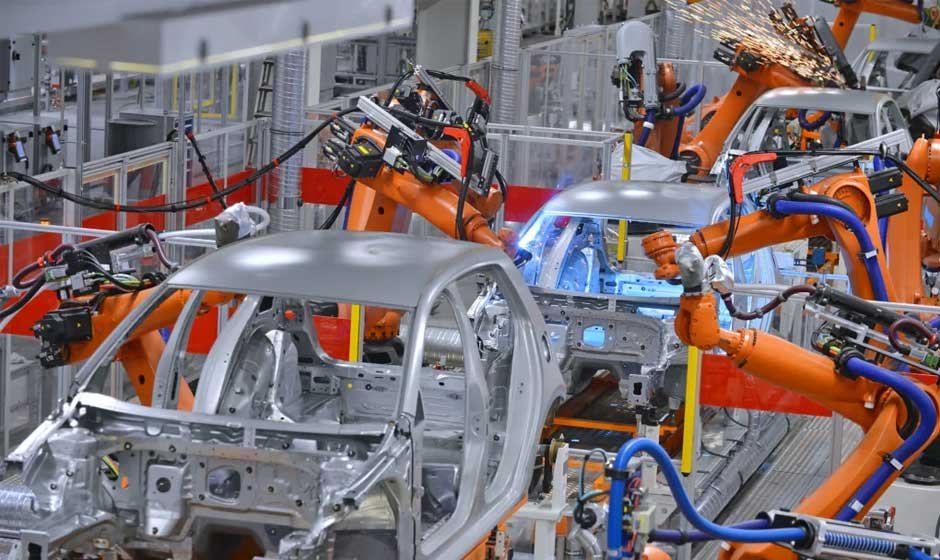Production targets continue to climb while tolerances become increasingly tighter. If you’re balancing throughput, quality, and a shrinking pool of skilled welders, you’re not alone. An industrial laser welder helps you concentrate heat precisely where you need it, allowing you to move faster with less rework and cleaner finishes. This article gives you the essentials—how the process works, what equipment choices matter, how automation changes the equation, and where it fits on your line—so you can make an informed call.
Partner Capabilities That Ensure Uptime
Choosing a credible partner significantly impacts uptime, integration speed, and operator safety. Denaliweld offers air-cooled and water-cooled fiber-laser welding systems, as well as pre-engineered cobot packages. Key details relevant to your decision include optional seam tracking, real-time power adjustment, and data capture for production tracing. These capabilities support consistent results when you standardize parameters across shifts.
Fundamentals of the Process
Principle of Operation
Laser beam welding focuses a high‑energy beam onto the joint to create a narrow “keyhole.” That keyhole allows deep penetration with a small weld width and limited thermal impact on surrounding material. Because the energy density is high, you typically see higher travel speeds than with many arc processes.
Heat Input and Distortion Control
With heat concentrated in a small area, the heat‑affected zone (HAZ) stays narrow. You spend less time straightening parts or chasing residual stress—especially on thin stainless, AHSS, and precision assemblies, where cosmetic quality and dimensional control are crucial.
Material Compatibility
You can join steels, stainless steels, nickel alloys, and aluminum with an industrial laser welder. With proper joint prep and parameters, you can also tackle certain dissimilar‑metal combinations. Always validate with test coupons before you lock a routing.
Equipment Landscape & Configurations
Cooling Architectures
- Air‑cooled: Portable and quick to deploy for light‑to‑medium duty work and field service. Fewer peripherals mean faster setup.
- Water‑cooled: Stable thermal management for continuous operation and integrated cells. This is the typical path for high duty cycles.
Form Factors (Handheld, Workstations, Robotic)
Handheld units excel for prototypes, repairs, and high-mix jobs. Enclosed workstations add safety and fixturing for repeatable batches. Robotic cells deliver the highest throughput and traceability when you need repeat production at speed.
Automation‑Ready Features
Modern controllers include robot‑ready I/O, interlocks, parameter libraries, and user‑friendly UIs. These features shorten ramp-up, reduce operator variability, and make it easier to freeze a process once it has been dialed in.
Control & Parameter Libraries
Pre‑engineered parameter sets help you hit acceptable welds quickly. Real-time power control maintains penetration as the joint fit-up varies. Data logging lets you correlate settings with results and defend quality during audits.
Integration with Automation & Robotics
Cobot Integration for Industrial Laser Welder Cells
Cobots offer reach and flexibility with simpler guarding than many traditional robot cells. They’re a natural step when you standardize tasks that started as handheld work. End‑of‑arm tooling and fixturing determine how quickly you change over between SKUs.
Real‑Time Power Adjustment and Seam Tracking
Real‑time power modulation helps you hold penetration when part thickness fluctuates or gaps change. Optional seam tracking utilizes sensors to automatically follow the joint, stabilizing bead placement when parts vary.
Production Consistency and Data Logging
Look for controllers that capture timestamps, power, speed, and alarms. Logging supports continuous improvement and quality investigations, and it’s invaluable when you scale from pilot to production.
Comparative Advantages vs. Conventional Welding
| Aspect | Laser (LBW) | GMAW/MIG | GTAW/TIG | SMAW/Stick |
| Heat input / HAZ | Very low; narrow HAZ | Moderate | Low–moderate | High |
| Distortion | Minimal on thin stock | Moderate | Low–moderate | Higher |
| Travel speed | High | Moderate–high | Low | Low |
| Automation fit | Excellent | Good | Limited | Limited |
| Rework/finishing | Low (clean seams) | Moderate (spatter) | Low | Moderate–high |
Why it matters: Less heat in the part means less straightening and finishing—so you protect tolerances and cycle time while improving cosmetic quality.
Surface Preparation & Adjacent Processes
Laser Cleaning for Pre‑Weld Prep and Maintenance
Surface condition drives weld quality. Laser cleaning removes oxides, paint, and oils without the use of abrasives or chemicals, integrates in-line, and reduces the risk of inclusions. If your shop already struggles with contamination or inconsistent fit‑up, adding cleaning ahead of welding can stabilize results.
Safety, Workstations, and Compliance
Operator Protection and Enclosures
Industrial laser welding typically uses Class 4 lasers. You should build a formal laser‑safety program: appropriate enclosures and viewing windows, SOPs, PPE, warning signs, and a trained Laser Safety Officer (LSO). Ensure that handheld stations and rework carts adhere to the same guidelines.
Certifications and Quality Assurance
If you supply regulated industries—or just want consistent outcomes—align your welding operations with recognized quality frameworks (e.g., ISO 3834 for fusion welding)—pair documented procedures with data logging and periodic audits.
Where the Industrial Laser Welder Fits on the Factory Floor
High‑Mix/Low‑Volume to High‑Volume Lines
Start with handheld operations for prototypes and ECOs; transition to cobot cells as routings stabilize. Parameter libraries and data logging make it easier to scale without losing consistency.
Precision Assemblies and Thin‑to‑Medium Stock
You achieve the biggest wins on parts where distortion tolerance is tight and finishing time is costly—such as battery tabs, thin stainless assemblies, sensor brackets, appliance components, and similar work.
Dissimilar‑Metal Joints
When metallurgical compatibility allows, lasers can join certain dissimilar pairs that are tough with arc processes. Validate properties with testing before release.
Practical Adoption Considerations
Selecting System Architecture for an Industrial Laser Welder
Match cooling to duty cycle (air‑cooled for portable work; water‑cooled for continuous duty). Select the form factor based on takt time, fixturing, and guarding requirements. Plan for power, fume extraction, and interlocks from day one.
Process Standardization and Parameter Control
Build a parameter library for your top SKUs and secure it. Use real‑time power control and logging to maintain penetration and traceability. Train operators on inspection criteria and failure modes so they can take action before parts accumulate.
Safety Infrastructure and Training
Write clear SOPs, appoint an LSO, and verify PPE and enclosure ratings. Run practice drills for alarms and interlocks to ensure proper operation. Treat handheld rework the same as the main cell.
If you’re moving toward collaborative automation, Denaliweld offers cobot packages that combine preset welding programs with data acquisition and optional seam tracking. Those features reduce setup time and help you maintain consistent bead placement and penetration when part variation occurs
Conclusion
Laser welding isn’t about replacing every arc process—it’s about adding a precise, fast, and automatable tool where it counts. If your roadmap includes cobots or higher traceability, consider exploring Denaliweld industrial laser welder systems to benchmark features such as real-time power control, parameter libraries, and logging. Start with a small cell, document the gains, and scale with confidence.














